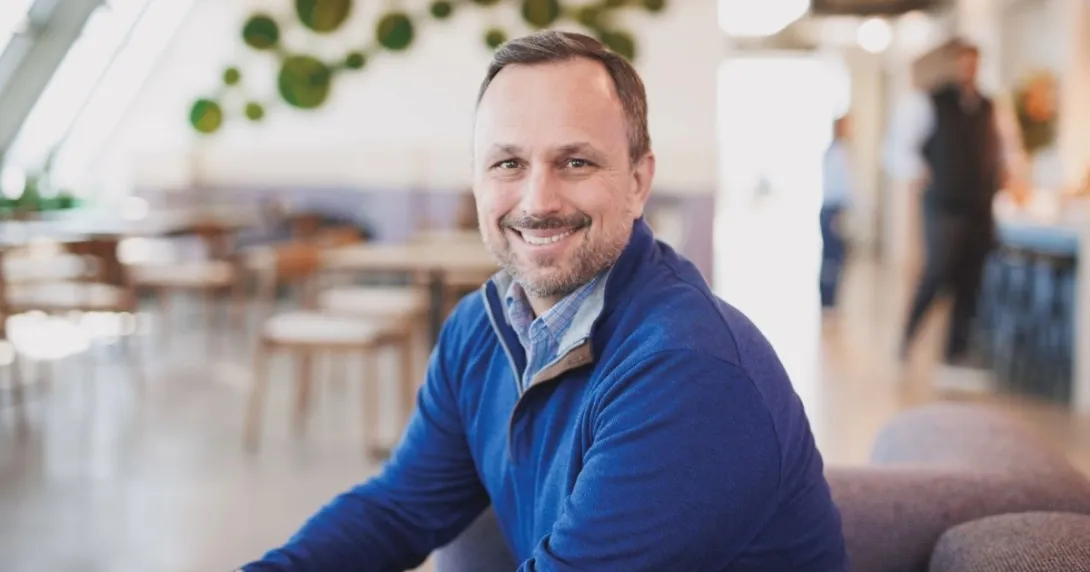
Daryl Tol, president of HATCo
Photo courtesy of General Catalyst
LOS ANGELES – At the Future of Health Annual Summit here on Tuesday, Daryl Tol, president of General Catalyst's Health Assurance Transformation Company (HATCo), sat down for an in-person interview with MobiHealthNews.
Future of Health (FOH) is an organization of more than 50 of the world’s most influential voices from health systems, government, industry, academia and technology, and its summit brings together FOH members to discuss shared challenges and develop recommendations to drive improvements in healthcare delivery and quality worldwide.
During the interview, Tol discussed General Catalyst's intentions with Summa Health and its progress toward developing a transformative healthcare system using technology.
MobiHealthNews: HATCo recently finalized its purchase of Summa. How are you implementing healthcare technology within the health system?
Daryl Tol: HATCo has two sides to it. One side will be the operation of the health system. The other side we call HATCo services. The HATCo services team manages engagements and builds solutions along with great companies. So, integrating those solutions is the responsibility of the HATCo services team.
At Summa, the HATCo services team will treat Summa like a client, a very substantial, comprehensive transformation client. So, we are going to make sure that Summa has a very carefully designed blueprint across multiple years to implement technology that achieves our transformation objectives there without the one-off point solution dynamic that creates fragmentation and challenge. So, we're using the two sides of HATCo to make sure that happens.
MHN: Are you going to make sure that all of the solutions used within Summa are interoperable?
Tol: That is the goal.
MHN: That seems hard.
Tol: It is hard. No. 1, they need to integrate with the electronic health record, so we will be creating, we hope, a very important partnership with the electronic health record company to integrate solutions. Then the solutions really need to integrate with each other. Information flow needs to be robust. The way we organize our data needs to be robust. And then leveraging AI to build our insight and to allow us to use the data in well-structured ways, we think could be magical, but it'll take work.
MHN: Will you only implement healthcare technologies that are backed by General Catalyst?
Tol: No. In fact, most health systems have hundreds of software solutions. The same is true at Summa Health, and in fact, most of those are not General Catalyst companies.
In addition, where we find best-in-class solutions inside the GC portfolio, that's great. We'll work closely with those companies. Where we find best-in-class solutions outside of the GC portfolio, that's great, but any company we work with in either of those categories needs to realize what we're doing. We're working to build a transformation example for the country, and so everyone we work with needs to be a partner in that effort and needs to think differently than 'you're a vendor, we're a customer – let's fight.' This really needs to be a collaborative journey.
MHN: What would you say to someone who says it is a venture capitalist-backed endeavor, so they are in it just to make more money for their portfolio companies?
Tol: Templates are dangerous. It's dangerous to look at someone and put them in a box. You really have to look at what their stated intentions are and then what their outcomes and actions are. And I would just say to those folks, watch. Watch. At some point, you'll see exactly who we are.
We have structured this relationship in a way that should signal long-term intention, not a private equity play, not even a venture play, but a long-term healthcare transformation effort. That is what will play out over time.
Now, it's interesting because in healthcare … I worked for 22 years at a not-for-profit health system, and money was always an important conversation because it's fuel for business. It's true at your house too, right?
MHN: Everywhere.
Tol: The kitchen table conversation ... your life's purpose is relationship, thriving, career, health, but you still sit at the kitchen table and do money stuff, and so there's that. That's normal, but we're not about that.
MHN: Why go into this huge endeavor of buying a health system? General Catalyst is already pretty successful.
Tol: The authentic sense of the ability to transform an industry requires being in the trenches with that industry. When we step into the trenches, we go from being theoreticians, having a thesis, to being practitioners, bringing that thesis to life.
And what Hemant Taneja and the visionaries within our group have said, "We've got to be practitioners. We have to be able to execute on this vision or transformation, or we'll just be working in the conference circuit." That's not our goal.
MHN: You won't really make a big change doing that either.
Tol: Right. We can talk a lot, a lot of people take notes, but they can go home and say these guys aren't credible, but at the end of the day, we will succeed. We will make change happen, and that example will be difficult to argue with.
MHN: What stage are you at right now? Where is Summa in the transformation?
Tol: Well, it's very early. We closed on Oct. 1. The good news is that the transaction took longer than expected, so we had a lot of planning time. We have good plans. Now we have to execute, and the whole team is rallying to that point. This is when it gets fun.
MHN: What has been the most challenging part of this whole process?
Tol: Two things. One, experiences like Steward have created, again, a templated view of what it means when private capital gets into healthcare. And we've had to educate many, many people that our intentions are different from that. That's been challenging, a little bit frustrating, but we've managed our way through it.
The second thing is, when you have an objective like this and it's very exciting, you just want to go, and it's been a long process. It takes a while, so we've had to be patient, and it's not always what we're best at.


